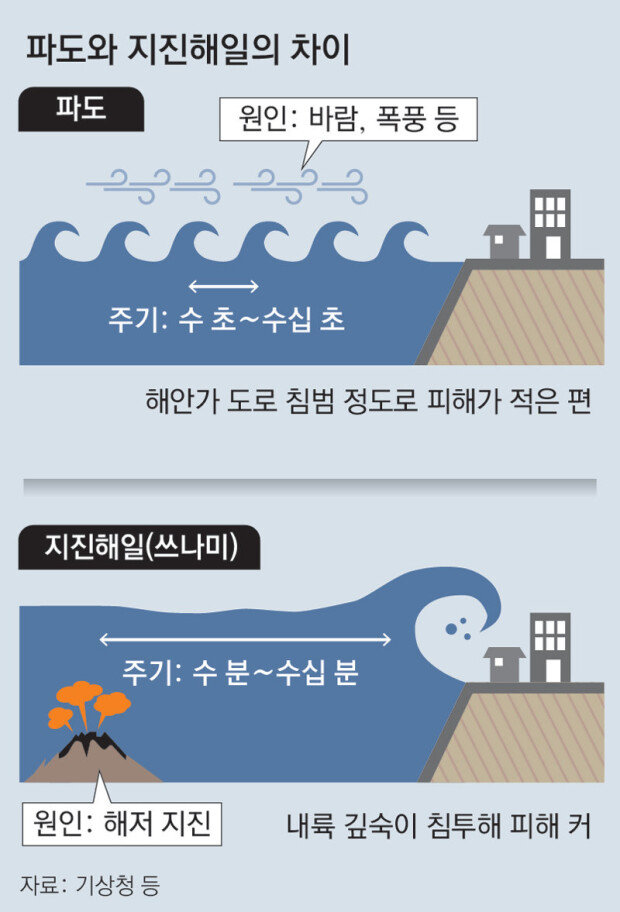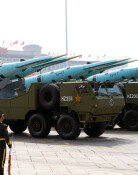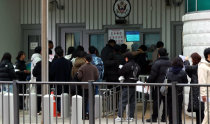Weather bureau says East Sea is no longer safe from quakes
Weather bureau says East Sea is no longer safe from quakes
Posted January. 03, 2024 08:06,
Updated January. 03, 2024 08:06

On Monday, when a magnitude 7.6 earthquake occurred in Japan’s Ishikawa Prefecture, the Korea Meteorological Administration announced that a tsunami with a maximum height of 85 centimeters reached Mukho Port in Gangwon Province. On the night of the earthquake in Japan, around 140 aftershocks followed, leading some experts to point out that this reveals the inadequacy of the East Sea of Korea to be labeled as an earthquake safety zone.
According to the meteorological agency on Tuesday, a tsunami with a maximum height of 85 centimeters was observed in Mukho Port of Donghae City around 8:35 p.m. Three minutes later, a tsunami with a height of 45 centimeters reached Sokcho City in Gangwon, and at 8:42 p.m., a tsunami with a height of 66 centimeters reached Hupo village in Uljin County, North Gyeongsang Province. The height of the tsunamis that reached the East Coast gradually decreased, falling to less than 10 centimeters at major observation points on Tuesday. "The tsunami situation has stabilized,” a meteorological agency official from South Korea said. “However, aftershocks continue in Japan, and until Wednesday morning, caution is advised due to high swells on the East Coast."
Looking at past cases, earthquakes in Japan have generally occurred in the eastern region near the plate boundary. However, there have been instances where earthquakes on the western side, bordering the East Sea, have affected the East Coast. After the 1993 earthquake with a magnitude of 7.8 in Hokkaido, Japan, Mukho Port experienced a tsunami with a maximum height of 203 centimeters, and Sokcho faced a tsunami with a maximum height of 276 centimeters. Although there were no casualties at the time, property damage amounting to 400 million won occurred from shipwrecks.
According to the South Korean Meteorological Agency, earthquakes with a magnitude of 2.0 or higher occurred 105 times in South Korea last year. The trend is increasing, with 68 occurrences in 2020, 70 in 2021, and 77 in 2022. "Since the 2011 earthquake in Japan, earthquakes in South Korea have been increasing,” said Earth Systems Science Professor Hong Tae-gyeong at Yonsei University. “There is a need to be cautious, especially in deep seas, as the repercussions continue."
yeah@donga.com



![화장실 갇혔을 때 생존법…“최후에는 변기뚜껑” [알쓸톡]](https://dimg.donga.com/c/138/175/90/1/wps/NEWS/IMAGE/2025/12/26/133042007.3.png)

![보일러 풀가동해도 춥다?…난방비 폭탄 범인은 ‘이것’ [알쓸톡]](https://dimg.donga.com/c/138/175/90/1/wps/NEWS/IMAGE/2025/12/24/133029046.3.png)

